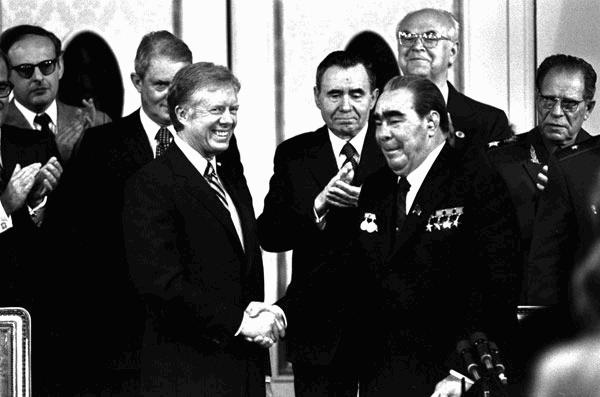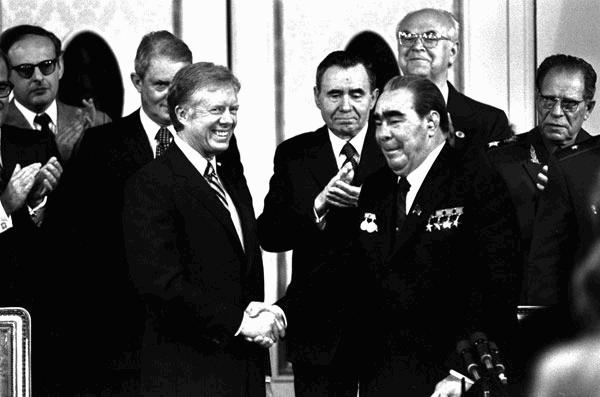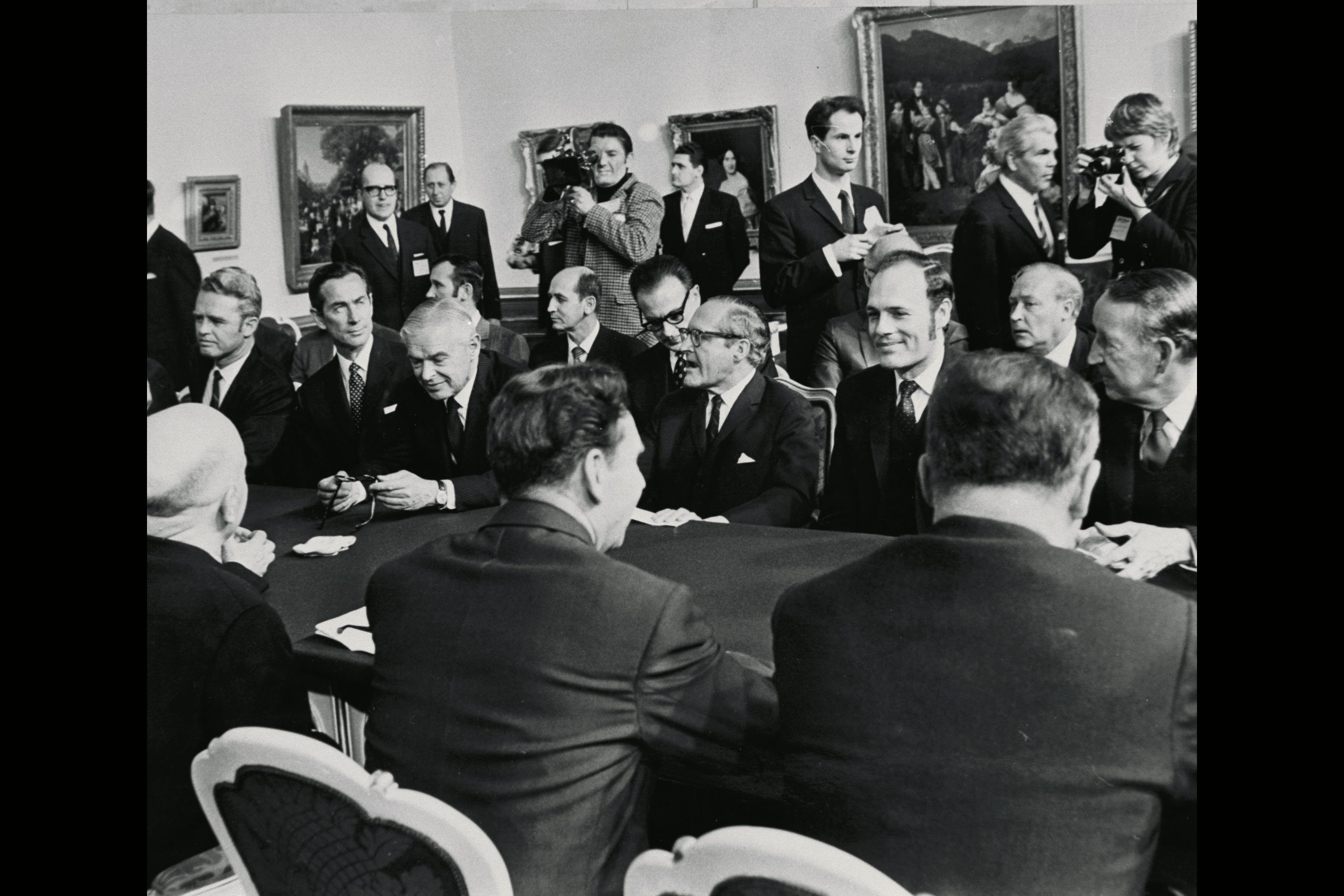The NATO forces in Western Europe had enjoyed clear military dominance over the Soviet Union up to the late 1970s. The U.S. and other NATO forces bombers and missiles were clearly superior to the old Soviet missiles and bombers. The Soviets moved to balance the NATO arsenal by development and deployment of a new more power generation of mid-range nuclear missiles called SS-20 and Tu22M.
NATO countered with deployment of new nuclear cruise missiles and Pershing ballistic missiles. They also sought negotiations with the Soviet over the build-up of nuclear weapons in Europe. These discussions had begun in Geneva, Switzerland in 1980.
During the first half of the 1980s, there was a chilling of the relationship between the United States and the Soviet Union with U.S. President Reagan repeatedly accusing the Soviets of violating the provisions of the SALT II Treaty which had been signed by both sides but never ratified in the U.S. Congress. In 1981, the U.S. had suggested the complete elimination of all intermediate range nuclear weapons on both sides. There was a disagreement over the inclusion or exclusion of British and French nuclear weapons and the Soviets withdrew from the negotiations in 1983. In 1984, the U.S. began deployment of intermediate nuclear weapons in Europe despite public protests.
Negotiations began again in 1986 with a Soviet proposal to eliminate all nuclear weapons in the world, including those in Europe by 2000. The U.S. declined this offer and instead counter-offered a staged reduction of intermediate range nuclear weapons to zero by 1989. The British and French arsenals were not part of the discussions. Discussions continued in Reykjavik, Iceland between U.S. President Reagan and Soviet Premier Gorbachev over nuclear disarmament. The final text of the treaty that was hammered out was influenced by the decision of the West German Chancellor to remove U.S. nuclear weapons from Germany.
The Treaty Between the United States of America and the Union of Soviet Socialist Republics on the Elimination of Their Intermediate-Range and Shorter-Range Missiles was signed in Washington, D.C. in December of 1987. The Treaty set a deadline of 1991 and by that time, thousands of intermediate range nuclear weapons had been removed and destroyed from the European theater. Both sides were able to inspect the military installations of the other side.
The Soviet Union dissolved in 1991 and the Russian Federation inherited their nuclear arsenal. The Russian Federation abided by the Treaty that the Soviets had signed until 2007. In that year, The RF President Putin stated that he had decided that it was no longer in the interest of the RF to adhere to the INF Treaty. The Russians were concerned about U.S. plans to deploy missiles in Poland and the Czech Republic that would be aimed at Russia. They said that their decision to continue with the INF or to withdraw from it would be strongly influenced by the U.S: deployment of the planned missiles in Eastern Europe. Ultimately the U.S. dropped the plans for Polish and Czech missile deployment.
Signing of the Intermediate-Range Nuclear Forces Treaty from a U.S. Stated Department:




